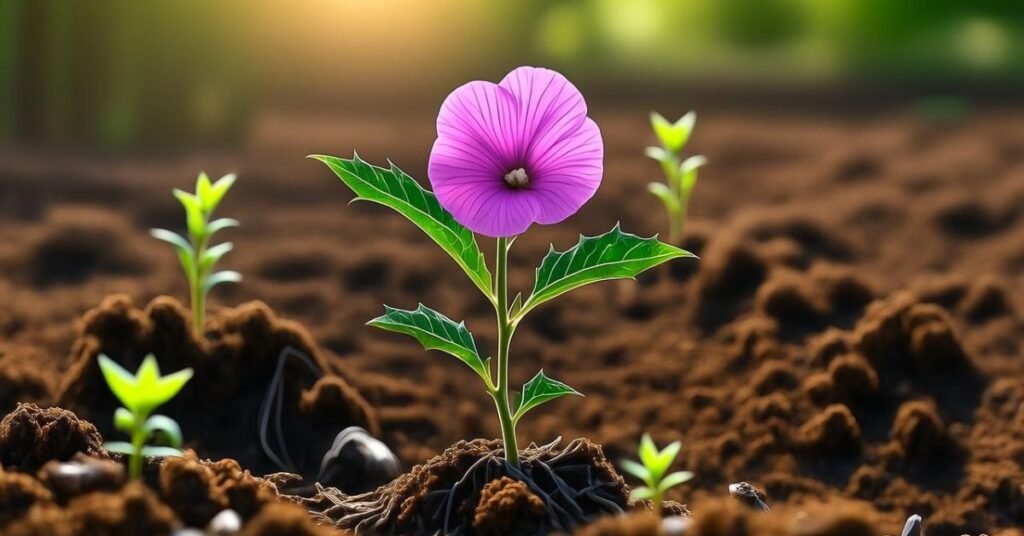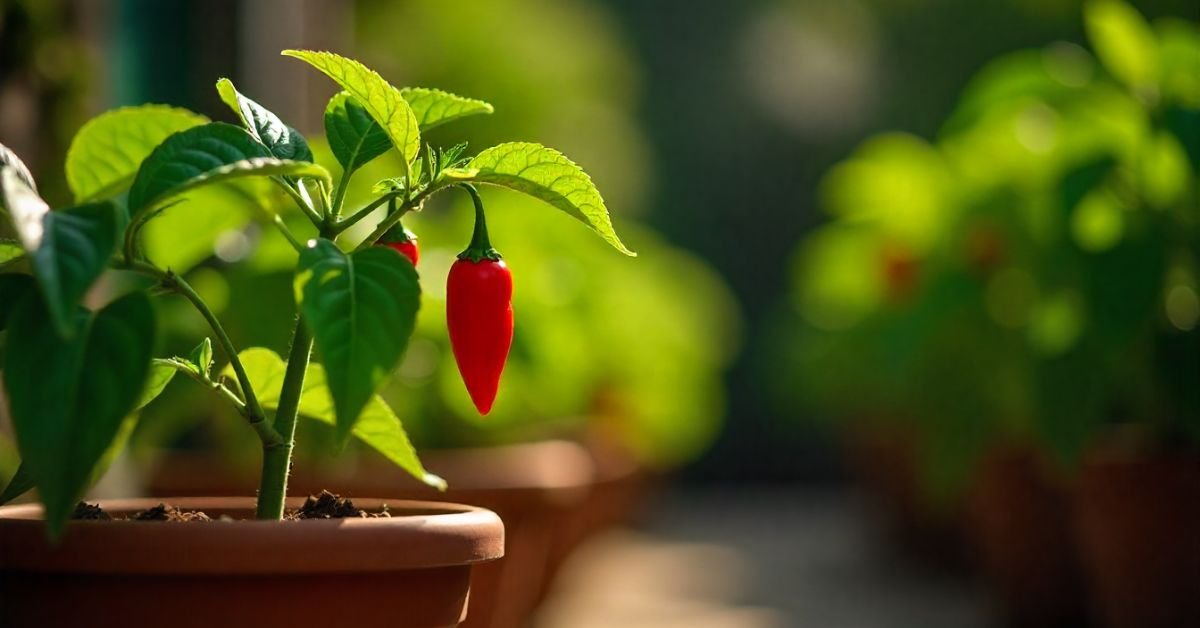Introduction
Cherry hot pepper plants are compact and colorful. They produce small round peppers with a mild to medium heat. These plants thrive well in containers. Their size makes them perfect for balconies and patios. Potted plants are easy to move and manage.
Growing cherry hot pepper plant in pots adds beauty and flavor to your space. Imagine picking fresh peppers right from your porch. This is a simple way to enjoy homegrown spice. With the right care, these plants produce peppers for months. It is fun and rewarding for any gardener.
Use well draining soil and a sunny spot for your pots. Water regularly but avoid overwatering. Fertilize lightly to encourage growth. Trim the plant for better airflow. With a little care, your cherry hot pepper plants will stay healthy and productive.
What Is a Cherry Hot Pepper Plant
The Cherry Hot Pepper Plant (Capsicum annuum) is a bushy plant that grows 18–36 inches (45–90 cm) tall and bears 1–1.5 inch (2.5–4 cm) round, thick walled fruits that turn from green to shiny red. Its peppers are moderately spicy with a hint of sweetness, hotter than sweet peppers but milder than super hot chilies, and are great fresh, pickled or stuffed.
Best Conditions for Growing Cherry Hot Pepper Plant
A Cherry Hot Pepper Plant grows best when given full sun, warm temperatures, good soil, and regular care. The ideal environmental conditions include:
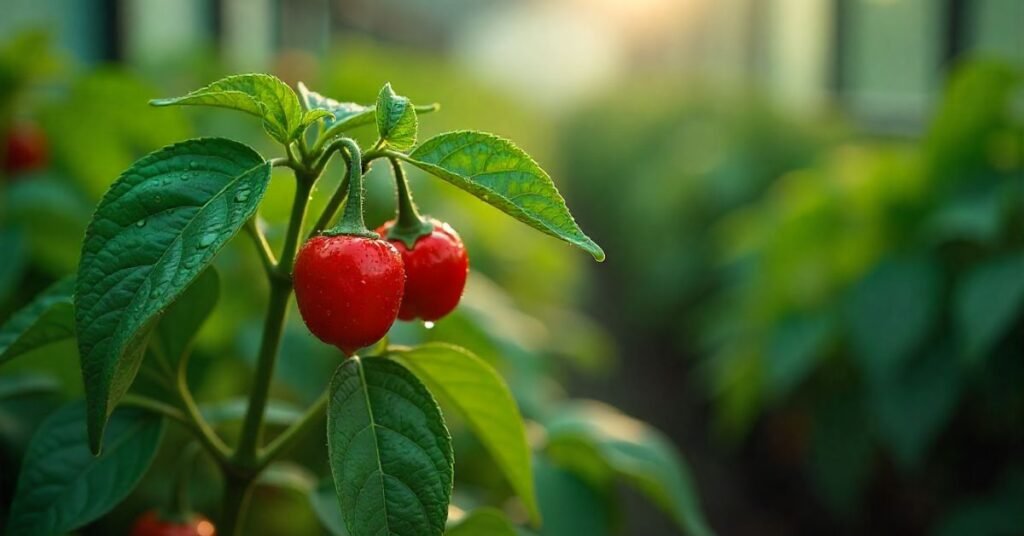
- Sunlight: At least 6 to 8 hours of full sun daily. More sun gives better fruiting.
- Temperature: Warm daytime temperatures of 20-30 °C (68-86 °F), cooler nights but not frost. Seed germination prefers soil at around 75-85 °F (24-29 °C).
- Soil: Well-drained, fertile soil with a pH around 6.0-7.0. Rich in organic matter. Soil must not stay soggy.
How to Start Cherry Hot Pepper Seeds
You begin with seeds. Starting well sets the path for a healthy Cherry Hot Pepper Plant. You can start indoors about 8-10 weeks before the last frost if you live in a place with cold winters. Sow seeds in small trays or pots. Plant each seed about ¼ inch (6-7 mm) deep into a moist seed starting mix. Keep the soil warm (75-85 °F) until germination, which often takes 7-21 days.
After seedlings develop a couple of true leaves and temperatures are safe, you harden them off. That means gradually exposing them to outdoor conditions (light, wind) over 7-14 days. Then transplant them to their final spot in the ground or in large pots. Ensure spacing among plants is 12-24 inches (30-60 cm) apart so air circulates and plants have room.
Care & Maintenance of Cherry Hot Pepper Plant
Once the Cherry Hot Pepper Plant is planted, care is important. Proper routines will ensure good yield and healthy plants.
Watering
Water Cherry Hot Pepper Plant regularly. Keep soil evenly moist but not waterlogged, because too much moisture causes root rot. Water deeply when the top inch of soil becomes dry. In hot weather, you may need to water more often. Mulch around the base can help retain moisture and protect roots.
Fertilizing
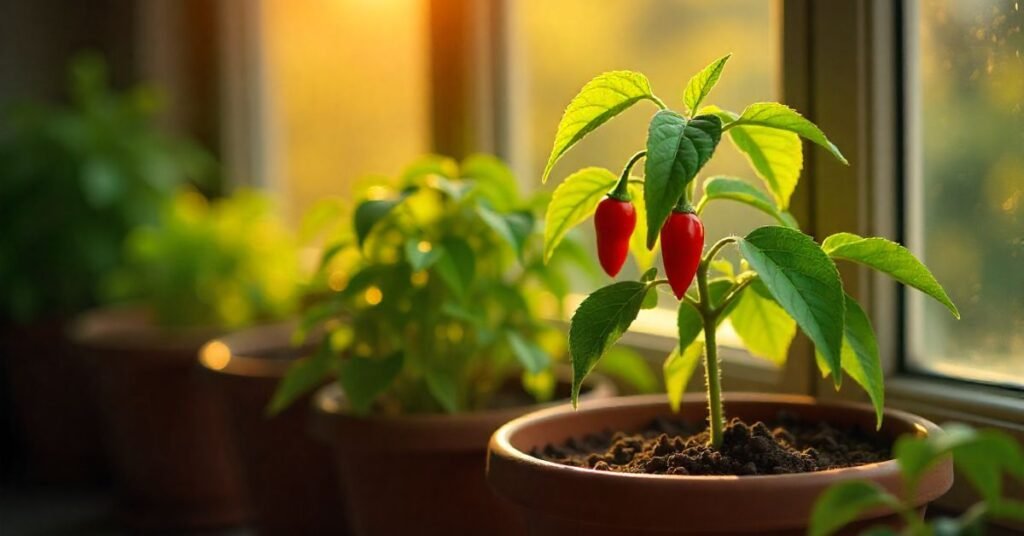
When plants are young, use a balanced fertilizer (equal N-P-K). After the plant starts flowering and setting fruit, switch to fertilizer richer in phosphorus and potassium to support fruit development rather than just leaf growth. Avoid too much nitrogen, because that leads to lush foliage but fewer peppers. Feed every 2-4 weeks during growth and fruiting.
Pruning & Support
Cherry Hot Pepper Plant benefits from light pruning or pinching of some suckers (small side shoots) to help focus the plant’s energy on producing fruit. Also, heavier fruit laden branches may droop. Use stakes or cages to support branches so they don’t break. Especially helpful in containers.
Pest & Disease Control
Watch for pests like aphids, spider mites, and whiteflies. Diseases may include fungal infections if humidity is high, or root issues if drainage is poor. Use good airflow, avoid overhead watering, remove diseased leaves. Organic insecticidal soaps or neem oil may help. Keep soil clean and avoid planting peppers in the same soil year after year without crop rotation.
Harvesting Cherry Hot Pepper Plant
Pick fruits when they turn from green to full red or the final color of the variety. They should feel firm and glossy. Green peppers give milder taste. Red peppers give stronger flavor and heat. Cut with scissors or a sharp knife and leave a bit of stem. Store peppers in the fridge for short use. For longer use dry, pickle, or preserve them. To save seeds let one fruit ripen fully, take out seeds, dry them well and store in a cool, dry place.
Varieties & Comparison of Cherry Hot Pepper Plant
There are several types and names. Some are called Large Red Cherry Hot, Hot Red Cherry, Cherry Bomb, etc. They vary by size, shape, wall thickness, heat and growth habit. Here is a table to compare:
These comparisons help you choose the right variety depending on space, climate, and how hot you want the peppers.
Problems & Solutions for Cherry Hot Pepper Plant
| Problem | Cause | Solution |
| Slow or no seed germination | Soil too cold, too dry, or old seeds | Use warm soil and fresh seeds for better success |
| Flower drop (no fruit) | Temperature stress or inconsistent watering | Adjust temperature and watering schedule |
| Yellowing leaves | Nutrient deficiency or poor drainage | Improve soil fertility and drainage |
| Aphids or mites | Pest infestation weakens plants | Spray gently with soap water or neem oil; keep leaves dry |
| Fungal spots on leaves | Wet foliage and poor airflow | Water at soil level and increase spacing for airflow |
Cherry Hot Pepper Plant in Different Climates
Your climate will affect how well the Cherry Hot Pepper Plant grows. In warm, long season climates, grow directly in the ground or large pots. The plant will grow fast and fruit heavily.
In cooler climates, start seeds indoors early and use greenhouses or covers to extend the growing season. Use pots that can be moved in if frost threatens. If humidity is high, ensure airflow to reduce disease. If very hot and dry, more frequent watering and shade during peak sun might help.
Uses & Ways to Enjoy Cherry Hot Pepper Plant
Cherry Hot Peppers are versatile. You can eat them fresh, cooked, or preserved.
Fresh peppers add color and heat to salads, salsas, and sauces.
Their round shape makes them attractive in mixed pepper dishes.
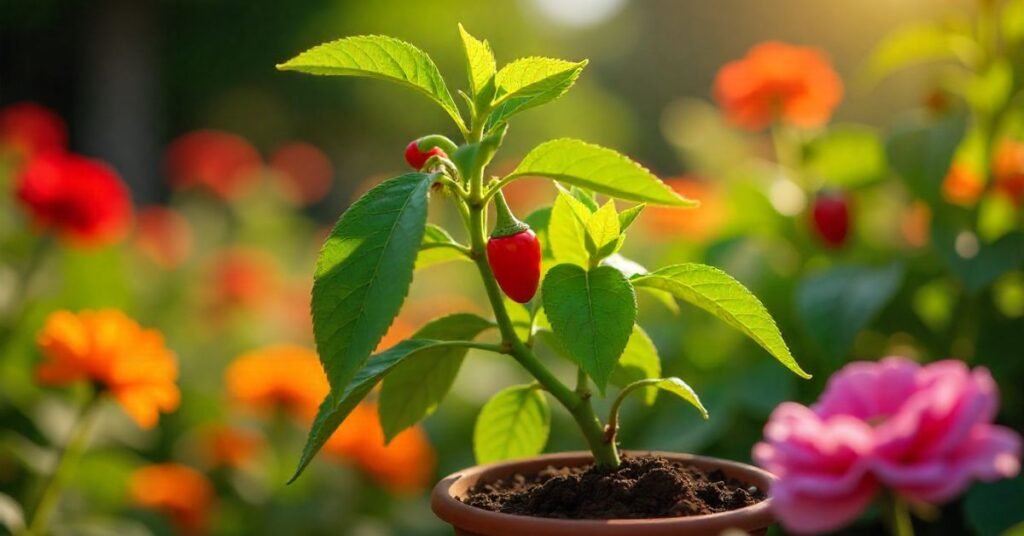
Pickling is a popular way to preserve Cherry Hot Peppers.
Their thick skin and firm texture hold up well in pickling jars.
Stuffed peppers are another favorite with cheese or meat fillings.
They are also good for drying and making chili flakes or powders.
Light cooking keeps flavor and heat without making food too sharp.
Use gloves when handling large amounts to avoid skin irritation from capsaicin.
Summary
You begin with quality seeds. Provide them with warm soil, full sun, and good soil. Transplant after frost danger. Care with watering, feed well, support the plant, manage pests. Harvest at full color for best heat and flavor. Decide early what to use (fresh, pickled, dried) so you can plan how much you want to grow.
FAQs
1. How hot are Cherry Hot Peppers?
They are medium hot, usually around 3,000–5,000 Scoville Heat Units.
2. Can Cherry Hot Peppers grow in pots?
Yes, they grow well in large pots with good soil and full sun.
3. How long do Cherry Hot Peppers take to mature?
Most varieties are ready to harvest in 70–85 days after transplanting.
4. How should I water Cherry Hot Pepper plants?
Keep soil evenly moist but not soggy, watering when the top inch feels dry.
5. What is the best way to store harvested Cherry Hot Peppers?
You can store them fresh in the fridge, or pickle, dry, or freeze them for later use.

